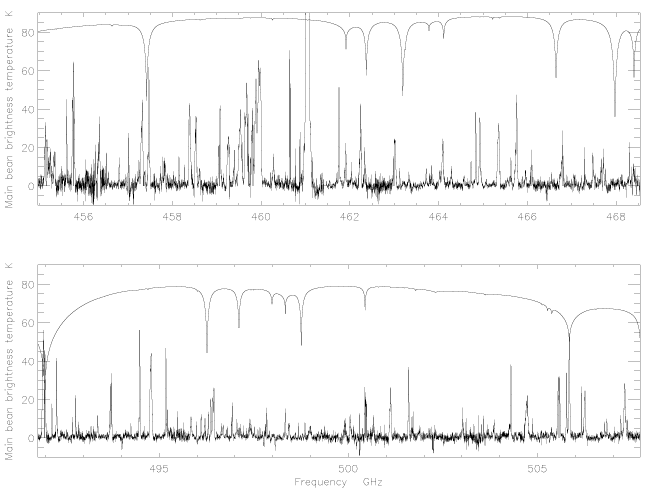|
||||
|
Interstellar Chemistry
The interstellar medium is composed of material in various thermal and chemical phases, including cool atomic gas inside, or mixed with cold molecular clouds; cool and warm atomic gas on the envelopes of molecular clouds; cold molecules in dark, dense or translucent clouds; warm molecules in dense clouds near embedded luminous sources; dense photoionised gas near O- and B-stars; and hot, shocked gas near supernova remnants and molecular outflow sources. We have been studying the properties of the ISM material using millimetre and submillimetre wavelength spectroscopy. A spectral survey in the region of 455-508 GHz has been carried out toward the Hot Core region at the center of the Orion Molecular Cloud using the JCMT 15 m telescope. Beam size of this observation is 10", which agree with size of the core. 313 spectral lines were observed in this survey. The lines are numerically dominated by rotational transitions of large organic molecules. Using an LTE rotational temperature abundance analysis, some of the derived column densities show a systematic increase over previously calculated values. Particularly, (CH3)2O, C2H3CN and C2H5CN are extremely abundant. For SO2, two lines in detected 35 lines were assigned to the vibrational excited state. The two lines have a Boltzmann distribution in the inside of vibrational excited state, i.e. the Boltzmann distribution is independent from that of the vibrational ground state. This phenomenon indicates that this vibrational excited state was not made by collision and was made by excitation with emission from IRc2. |
|
|

